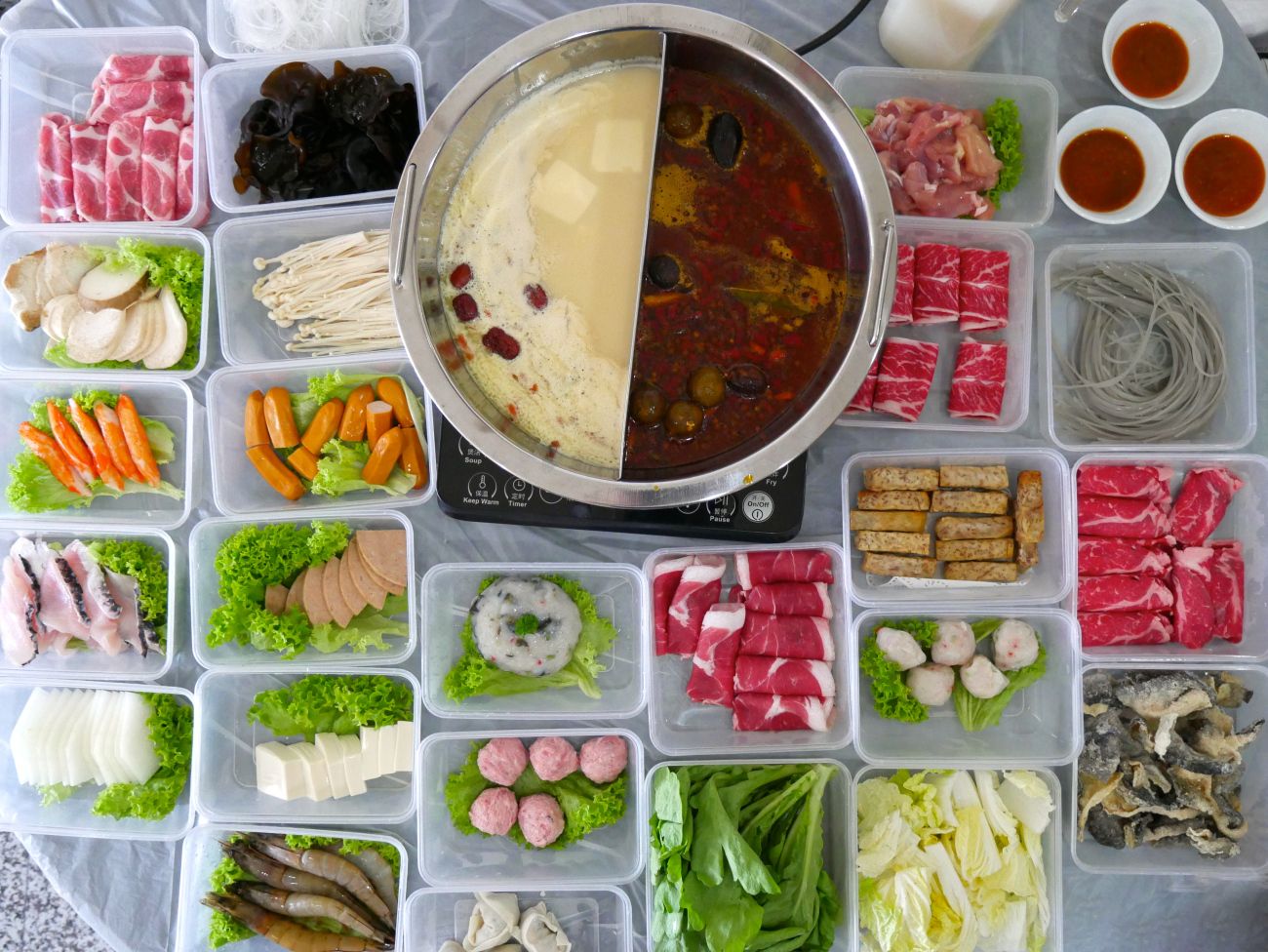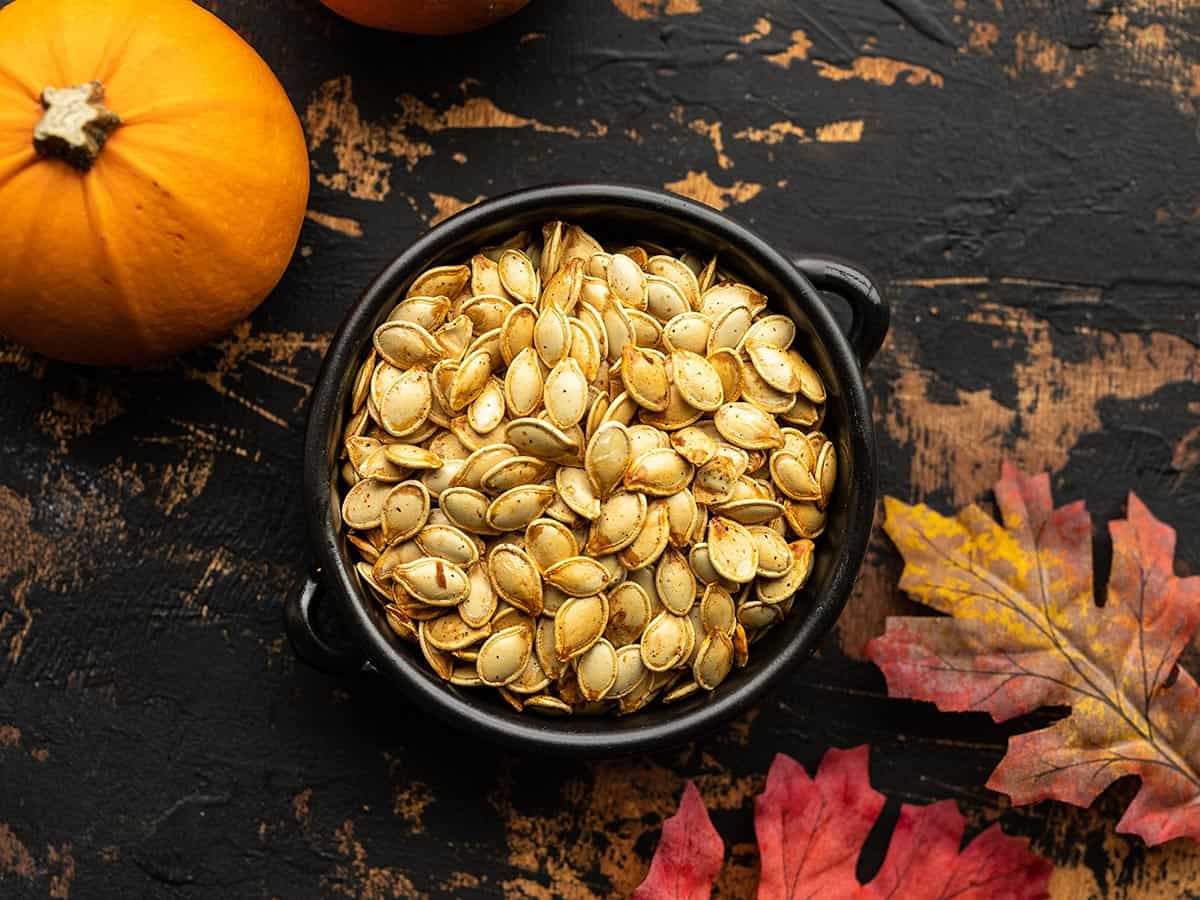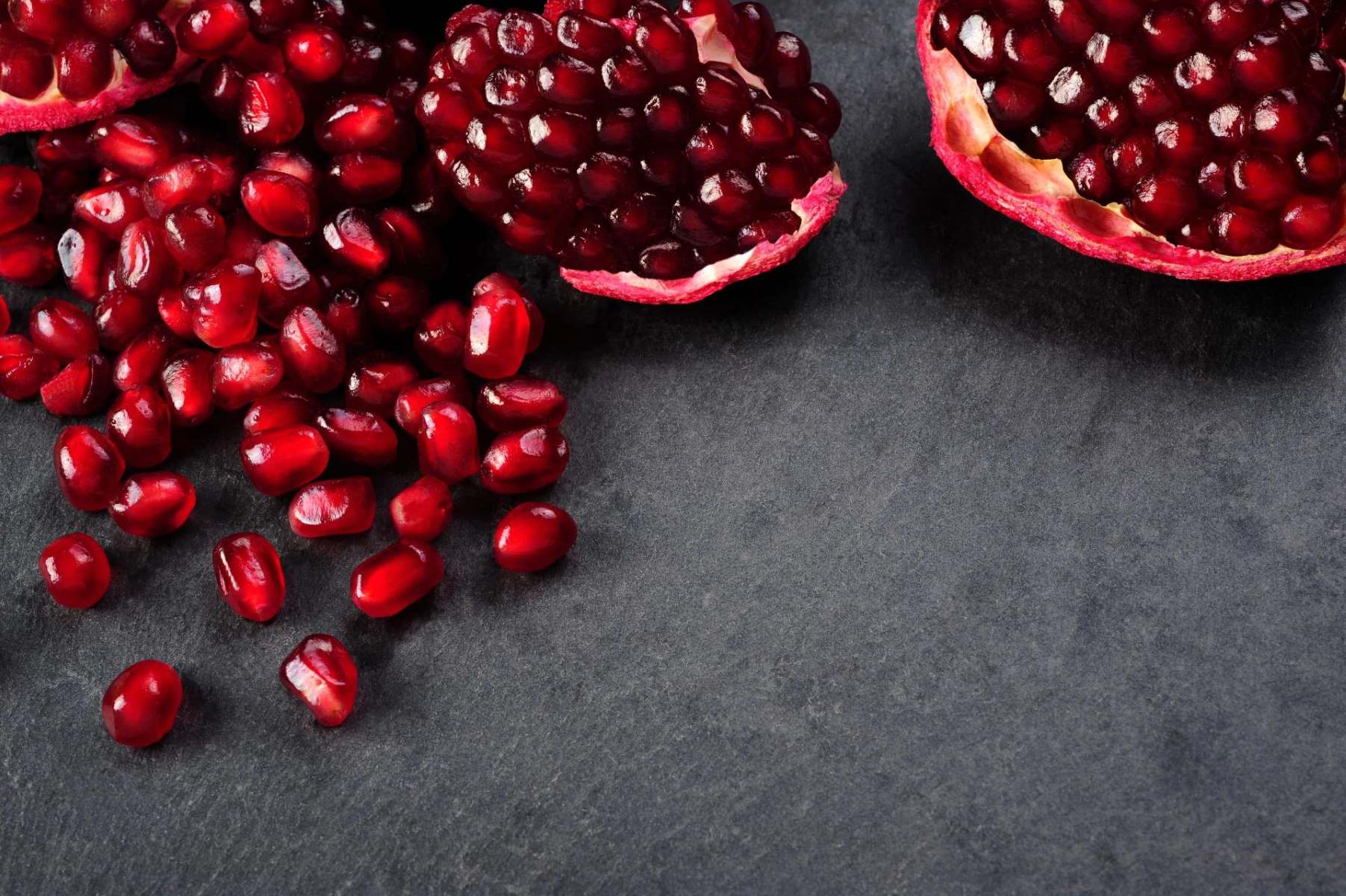Home>Furniture>Kitchen Furniture>How Many Calories Are In A Hot Pot


Kitchen Furniture
How Many Calories Are In A Hot Pot
Modified: October 20, 2024
Discover how many calories are in hot pot and explore informative articles on nutrition and healthy eating.
(Many of the links in this article redirect to a specific reviewed product. Your purchase of these products through affiliate links helps to generate commission for Storables.com, at no extra cost. Learn more)
Introduction
Welcome to the delicious world of hot pot! Hot pot, also known as steamboat, is a popular and versatile dining experience enjoyed by many cultures around the world. It is a communal meal where friends and family gather around a simmering pot of flavorful broth to cook a variety of ingredients.
Historically, hot pot originated in China, with its roots tracing back over a thousand years. However, it has since spread to other Asian countries like Japan, Korea, and Thailand, as well as western countries where it has gained immense popularity.
What makes hot pot so special is the interactive nature of the meal, where everyone participates in the cooking process. Each person can customize their own hot pot, choosing from a wide array of ingredients such as thinly sliced meats, fresh seafood, vegetables, tofu, and noodles. The ingredients are then cooked in the simmering broth, resulting in a flavorful and satisfying dish.
Not only is hot pot a fun and social dining experience, it also offers a wide range of nutritional benefits. The ingredients used in hot pot can be rich in vitamins, minerals, protein, and fiber, making it a wholesome meal option. However, it is important to be mindful of the calorie content of hot pot, as it can vary depending on the ingredients and cooking methods used.
In this article, we will explore the calorie content of hot pot ingredients, the factors that influence calorie count, and provide some tips on how to reduce calorie intake while enjoying this delectable meal. So, let’s dive into the world of hot pot and discover just how many calories are in this beloved cuisine!
Key Takeaways:
- Hot pot offers a fun and social dining experience with a wide range of nutritious ingredients, but it’s important to be mindful of calorie content and make smart choices to enjoy a balanced meal.
- By choosing lean proteins, loading up on veggies, and being cautious with sauces, you can create a healthier hot pot experience while still savoring the joy of communal dining.
Read more: How Many Calories Do You Burn In Hot Tub
Understanding Hot Pot
Hot pot is more than just a meal—it’s a culinary experience that brings people together. The concept of hot pot revolves around the communal sharing of a simmering pot of broth, where everyone cooks their own ingredients at the table. This interactive dining style allows for socializing and customization, making each hot pot experience unique and enjoyable.
The foundation of hot pot is the broth, which serves as the flavor base for cooking the ingredients. The broth can be made from a variety of ingredients such as chicken, beef, seafood, or vegetables, and can be seasoned with spices and herbs to enhance the taste. The broth is typically heated in a specialized pot called a hot pot, which is placed in the center of the dining table.
Hot pot ingredients are diverse and offer something for every palate. Thinly sliced meats like beef, pork, lamb, and chicken are popular choices, as they cook quickly in the simmering broth. Seafood options often include shrimp, fish, squid, and shellfish. Vegetables such as leafy greens, mushrooms, and root vegetables add freshness and texture to the hot pot. Tofu, dumplings, and noodles are also commonly included to provide a savory and comforting element to the meal.
When it comes to seasoning and dipping sauces, the options are endless. Many hot pot aficionados enjoy creating their own customized sauces by mixing ingredients like soy sauce, sesame oil, garlic, chili paste, and vinegar. These sauces add a burst of flavor to the cooked ingredients and can be tailored to individual preferences.
Hot pot is not just a culinary delight, it also offers several health benefits. The use of fresh ingredients, minimal processing, and the gentle cooking method help retain the nutrients in the food. Additionally, the communal aspect of sharing a hot pot encourages people to slow down, enjoy their meal, and engage in conversation, promoting a relaxed and enjoyable dining experience.
Whether it’s a winter warmer or a summer indulgence, hot pot is a versatile and satisfying meal that can be enjoyed all year round. The next time you gather with friends or family, consider embracing the hot pot tradition and create lasting memories around the dinner table.
Hot Pot Ingredients
Hot pot is all about variety and customization. There is an abundance of ingredients to choose from, allowing you to create a hot pot that caters to your taste preferences. Here are some popular hot pot ingredients to include in your next steamboat feast:
- Meat: Thinly sliced meats are a staple in hot pot. Beef, pork, lamb, and chicken are commonly used. Choose lean cuts of meat to reduce the calorie content.
- Seafood: Fresh seafood adds a delightful touch to the hot pot experience. Shrimp, fish, squid, scallops, and clams are popular choices. Opt for fresh seafood for optimal flavor and nutrition.
- Vegetables: Leafy greens like bok choy, spinach, and cabbage are commonly included in hot pot. Other vegetable options include carrots, mushrooms, bean sprouts, and broccoli. These colorful additions provide essential vitamins and minerals.
- Tofu: Tofu is a versatile ingredient that absorbs the flavors of the broth. Firm tofu works best in hot pot, providing a good source of plant-based protein.
- Dumplings: Dumplings, both meat-filled and vegetarian, add a tasty twist to the hot pot. They are usually made with a thin dough shell filled with a flavorful mixture of meat, vegetables, and spices.
- Noodles: Noodles are a comforting addition to the hot pot. Thinly sliced rice noodles or vermicelli cook quickly and absorb the delicious flavors of the broth.
- Mushrooms: Mushrooms are a common ingredient in hot pot due to their earthy flavor and meaty texture. Shiitake, oyster, and enoki mushrooms are popular choices.
- Sauces and Condiments: Hot pot sauces and condiments allow you to customize the flavor of your hot pot. Common options include soy sauce, sesame oil, chili oil, garlic, and vinegar.
These are just a few examples of the wide range of ingredients you can experiment with in your hot pot. Feel free to get creative and include your favorite ingredients to make your hot pot experience truly unique and enjoyable.
Remember to use fresh and high-quality ingredients to maximize the flavors and nutritional benefits of your hot pot. Happy cooking and happy hot potting!
Cooking Methods and Nutrition
When it comes to cooking hot pot, there are a few different methods you can choose from. Each method has its own unique benefits and considerations. Let’s explore the different cooking methods and discuss the nutritional aspects of hot pot:
1. Simmering Broth: The most traditional method of cooking hot pot involves simmering the ingredients in a flavorful broth. The ingredients are placed in the simmering broth and cooked until they are tender and cooked through. This method allows the flavors of the ingredients to infuse into the broth, resulting in a rich and savory flavor profile.
2. Single-Serve Pot: Another popular way to enjoy hot pot is by using a single-serve pot, where each person has their own individual pot to cook their ingredients. This method offers a more personalized experience, allowing each person to control their cooking time and preferred level of doneness.
3. Grill Plate: Some hot pot setups include a grill plate alongside the simmering broth. This allows you to grill certain ingredients, such as thinly sliced meats, on the grill plate while enjoying the hot pot. Grilling adds a smoky flavor and crispy texture to the ingredients.
When it comes to nutrition, hot pot can be a healthy and balanced meal option. The use of fresh ingredients like lean meats, seafood, and vegetables provides essential nutrients like protein, vitamins, and minerals. Additionally, hot pot allows for portion control as you can choose the amount and type of ingredients you include in your pot.
However, it is important to be mindful of the cooking method and ingredients used to maintain the nutritional quality of your hot pot:
1. Broth: Opt for a broth that is low in sodium or use homemade broth to control the salt content. Additionally, avoid using oily or fatty broths to keep the calorie count in check.
2. Meat and Seafood: Choose lean cuts of meat and seafood to reduce the fat content. Trim off any visible fat before adding the ingredients to the hot pot. Incorporating a variety of seafood options can also provide beneficial omega-3 fatty acids.
3. Vegetables: Load up on a variety of vegetables to boost the fiber content and provide essential vitamins and minerals. Choose fresh and vibrant vegetables to maximize their nutritional value.
4. Sauces: Be mindful of the sauces and condiments you use to flavor your hot pot. Some sauces and condiments can be high in sodium or contain added sugars. Opt for healthier options or create your own sauces using fresh herbs and spices.
By making smart ingredient choices and practicing portion control, hot pot can be a nutritious and satisfying meal that caters to your taste preferences. Enjoy the flavors and benefits of hot pot while being mindful of your overall dietary goals.
When enjoying hot pot, be mindful of the high calorie content, especially from the broth, meat, and dipping sauces. Load up on vegetables and lean protein to keep the calorie count in check.
Calorie Content of Hot Pot Ingredients
When it comes to hot pot, the calorie content of the ingredients can vary depending on the type and quantity used. It’s important to be aware of the calorie count of the ingredients you include in your hot pot to make informed choices about your meal. Here’s a breakdown of the approximate calorie content of some common hot pot ingredients:
- Meat: Lean cuts such as chicken breast, beef sirloin, and pork tenderloin contain approximately 150-200 calories per 100 grams. Fattier cuts like beef ribeye or pork belly can range from 250-350 calories per 100 grams.
- Seafood: Fish and shellfish are generally low in calories. Shrimp and squid contain around 80-100 calories per 100 grams, while fish fillets can range from 100-150 calories per 100 grams. The calorie content may vary based on the specific type of seafood and its preparation.
- Tofu: Firm tofu contains about 70-90 calories per 100 grams. It is a great plant-based protein option for hot pot that is low in calories and high in nutrients.
- Dumplings: The calorie count of dumplings varies depending on the filling and size. On average, dumplings range from 30-70 calories per piece.
- Noodles: Rice noodles or vermicelli contain approximately 100-150 calories per 100 grams. Keep portion sizes in mind as noodles can quickly contribute to the calorie count.
- Vegetables: Vegetables are generally low in calories, providing essential nutrients and fiber. Leafy green vegetables like bok choy and spinach contain around 10-20 calories per 100 grams. Other vegetables like mushrooms, carrots, and broccoli range from 20-30 calories per 100 grams.
- Sauces and Condiments: While sauces and condiments do add flavor to your hot pot, they can also contribute to the calorie count. Be mindful of the amount you use, as some sauces can contain added sugars and calories.
Remember that these calorie estimates are approximate and can vary based on factors such as cooking methods, portion sizes, and specific brands or preparations. It’s always a good idea to refer to the nutrition information on product packaging or consult a reliable source for accurate calorie counts.
By being aware of the calorie content of hot pot ingredients, you can make informed choices and create a well-balanced meal that aligns with your dietary goals. Enjoy the flavors and experience of hot pot while keeping an eye on your calorie intake.
Read more: How Many Calories Is A Glass Of Milk
Factors Influencing Calorie Count
The calorie count of hot pot can vary based on several factors. Understanding these factors can help you make informed choices and manage your calorie intake. Here are some key factors that influence the calorie count of hot pot:
1. Ingredient Selection: The type and quantity of ingredients you choose for your hot pot significantly impact the calorie count. Opt for lean cuts of meat, seafood, and tofu to keep the calorie content lower. Additionally, incorporating a variety of vegetables can add bulk and nutrients to your hot pot without significantly increasing the calorie count.
2. Cooking Methods: The cooking method you use can affect the calorie count of hot pot. Simmering the ingredients in a flavorful broth or grilling them on a hot plate requires minimal added fats, resulting in lower calorie content compared to deep-frying or pan-frying methods.
3. Broth Choices: The type of broth you use can impact the calorie count. Rich and oily broths can increase the calorie content of your hot pot. Opt for lighter broths such as clear vegetable or chicken broth to reduce calorie intake. Additionally, choosing low-sodium broths can help manage sodium levels.
4. Portion Sizes: Monitoring portion sizes is crucial in managing calorie intake. Controlling the amount of each ingredient you add to your hot pot can help prevent excessive calorie consumption. It’s important to strike a balance between enjoying a variety of ingredients and maintaining portion control.
5. Sauces and Condiments: Sauces and condiments can add flavor to your hot pot, but they can also contribute to the calorie count. Some sauces may contain added sugars, sodium, or fats, increasing the overall calorie content. Use sauces and condiments sparingly or opt for healthier alternatives to manage calories.
6. Cooking Oil and Seasonings: How you prepare and season your ingredients can impact the calorie count. Avoid excessive use of cooking oil when grilling or frying ingredients and use lighter cooking methods whenever possible. Be mindful of the amount of seasonings, herbs, and spices you use as they can also add calories.
7. Customization: Hot pot allows for customization, which means you have the power to control the ingredients and their quantities. Choosing a balanced assortment of ingredients, focusing on lean proteins, vegetables, and whole foods, can help create a nutritious and lower-calorie hot pot.
By being aware of these factors, you can make conscious decisions while preparing and enjoying your hot pot. Balancing ingredient choices, portion sizes, and cooking methods can help you create a delicious hot pot meal while managing your calorie intake.
Tips for Reducing Calorie Intake
While hot pot can be a delicious and satisfying dining experience, it’s important to be mindful of your calorie intake, especially if you are watching your weight or adhering to a specific diet. Here are some helpful tips for reducing calorie intake while still enjoying the flavors of hot pot:
1. Choose leaner proteins: Opt for lean cuts of meat like chicken breast, beef sirloin, or pork tenderloin. These options are lower in calories and saturated fats compared to fattier cuts. Incorporating more seafood or tofu can also provide a healthy dose of protein without the excess calories.
2. Load up on vegetables: Vegetables are a great way to add volume and nutrients to your hot pot without significantly increasing the calorie content. Focus on leafy greens, mushrooms, and other low-calorie vegetables. They will make your hot pot more satisfying and nutritious.
3. Watch your portion sizes: It’s easy to get carried away with adding more and more ingredients to your hot pot. Be mindful of portion sizes to avoid excessive calorie intake. Use smaller plates or bowls to help control portion sizes and take your time to savor each bite.
4. Use low-sodium broths: Broths can add flavor to your hot pot, but some can be high in sodium. Look for low-sodium broth options or make your own using fresh ingredients to control the sodium content. This can help manage your overall sodium intake while enjoying the flavors of the hot pot.
5. Be cautious with sauces and condiments: Sauces and condiments add flavor to hot pot, but they can also contribute to calorie intake. Use sauces sparingly and choose lighter options like soy sauce or vinegar. Alternatively, experiment with homemade sauces using fresh herbs, spices, and low-calorie ingredients.
6. Steam or boil instead of deep-frying: Instead of deep-frying ingredients, consider steaming or boiling them. This reduces the calorie content significantly without compromising on flavor and texture. It also minimizes the use of oil, resulting in a healthier hot pot experience.
7. Stay hydrated: Drinking plenty of water or herbal tea while enjoying your hot pot can help you feel fuller and prevent overeating. Sometimes, thirst can be mistaken for hunger, so staying hydrated can help curb unnecessary calorie consumption.
8. Balance your overall diet: While it’s important to be mindful of the calorie content of your hot pot, it’s equally important to maintain a balanced diet overall. Hot pot can be a part of a healthy eating plan if you balance it with other nutritious meals and mindful food choices throughout the day.
Remember, the enjoyment of hot pot comes not just from the taste, but also from the experience of sharing a meal with loved ones. By following these tips and making mindful choices, you can enjoy a tasty and healthier hot pot experience while managing your calorie intake.
Conclusion
Hot pot is a delightful and interactive dining experience that brings people together around a simmering pot of flavorful broth. It is a versatile meal that allows for customization and caters to various taste preferences. While hot pot offers a range of nutritional benefits, it’s important to be mindful of the calorie content of the ingredients and make informed choices.
By selecting lean proteins, loading up on vegetables, and watching portion sizes, you can enjoy a balanced hot pot that aligns with your dietary goals. Choosing low-sodium broths, being cautious with sauces and condiments, and utilizing healthier cooking methods can further reduce calorie intake. Hydration and overall dietary balance should also be considered for a holistic approach to healthy eating.
Remember, hot pot is not just about the food—it’s about the experience of gathering with loved ones and enjoying a shared meal. Focus on the joy and connection that hot pot brings, while being mindful of your choices to create a satisfying and nourishing dining experience.
So, the next time you gather around the hot pot, immerse yourself in the flavors, textures, and communal atmosphere. Make thoughtful choices that align with your wellness journey and create lasting memories around the hot pot table.
Indulge in the warmth, taste the flavors, and savor the experience of hot pot – a delightful culinary adventure that nourishes not just your body, but also your soul.
Frequently Asked Questions about How Many Calories Are In A Hot Pot
Was this page helpful?
At Storables.com, we guarantee accurate and reliable information. Our content, validated by Expert Board Contributors, is crafted following stringent Editorial Policies. We're committed to providing you with well-researched, expert-backed insights for all your informational needs.















0 thoughts on “How Many Calories Are In A Hot Pot”